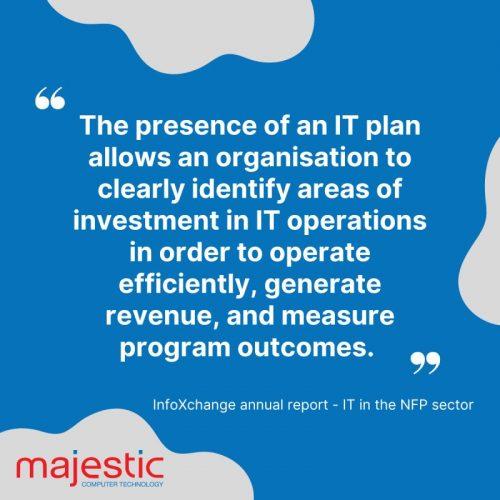The client retention issues that can arise when IT infrastructure is inadequate
When people think of the cost of inadequate infrastructure, it’s typically downtime and increased replacement cost that come to mind. However, there’s a whole other layer of hidden cost, including client retention issues, staff turnover and lost business opportunity. This week we’re looking at the client retention issues that can arise when IT infrastructure is inadequate.
Smart infrastructure investments are a key advantage to any organisation, but especially so in the traditionally over-stretched and under-resourced areas of the Healthcare and NFP sectors. The key to those smart, strategic investments is an infrastructure plan that encompasses all 4 quadrants of the Majestic Organisational Maturity Model.
An inadequate, or not-fit-for-purpose IT infrastructure creates a number of issues. The most obvious issues that often come to mind are an increased technology debt, increased downtime due technical failure, but the less obvious impacts include the ability to both attract and retain your clients.
For example, let’s assume that you’re an NFP organisation and you’re delivering amazing social services into the marketplace. Obviously, part of your ability to survive is by having a growing membership or having philanthropic input into the organisation, by having people invest or bequeath funds to the organisation. Those things don’t just happen by themselves. They happen because people are able to engage with you from the outside, and that typically happens through technology.
Long gone are the days that the only way to collect funds was through a telethon or via phone. We have a number of different mediums today that are available equally to everyone. An ever increasing number of charitable organisations in Australia mean that everyone is fighting for funds that can support the organisation and help them champion their cause. The organisations that invest in the type of technology solutions that reduce friction and make the experience of interacting with them a more pleasurable one, are ultimately the ones that win the lions share of those funds. On the other hand, the organisations who don’t end up missing out, because :
- It’s too hard to interact with them.
- It’s too hard to sign up as a member.
- It’s too hard to subscribe to receive information that the organisation delivers.
- It’s too hard to receive care services etc.
And when it’s too hard, people simply go somewhere else.
InfoXchange have released their 2021 report into Digital Technology in the NFP Sector. Now in its 7th year, the report provides detailed technology insights. Some notable statistics from this year include:
- 69% of not-for-profits are in the process of moving or have moved to the cloud.
- 53% of not-for-profits are satisfied with the way they are using technology.
- Only 38% of organisations reported that their primary information system allows them to understand the impact of their services.
- Almost 50% of organisations do not have effective organisational information security plans.
- 25% of not-for-profits felt they were completely or largely unprepared to support staff working from home.
- 44% of not-for-profits said improving their website is a top priority.
These findings point to an overall level of digital immaturity within the NFP sector. Does your organisation reflect these results?



